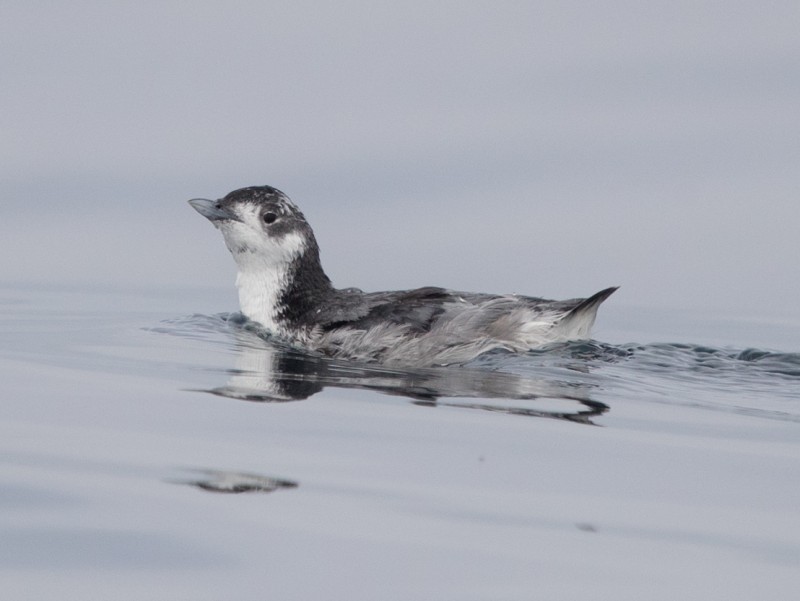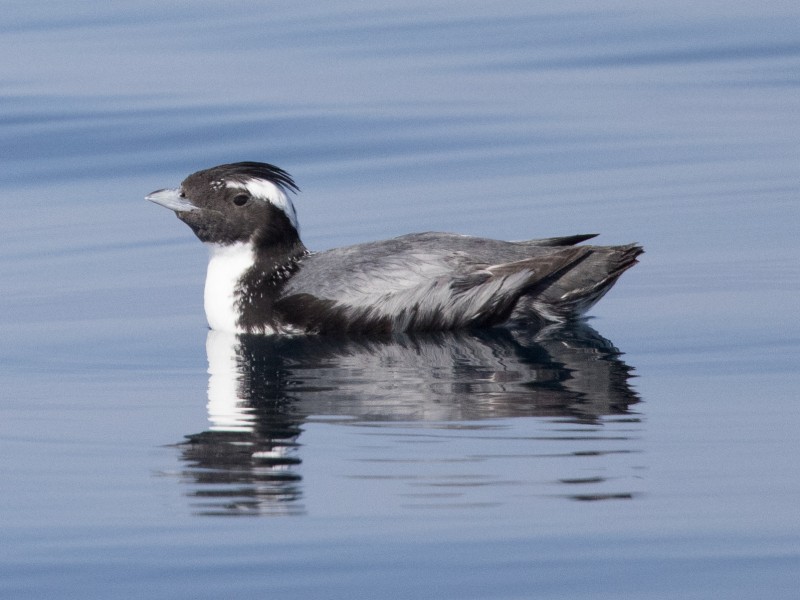Japanese Murrelet 冠海雀 Synthliboramphus wumizusume
Category I. Accidental.
IDENTIFICATION

July, Yann Muzika. Non-breeding plumage.
24-26 cm. Similar to Ancient Murrelet. In non-breeding plumage it is paler on the head with less extensive dark cap and some white on sides of crown. Juvenile has browner head and upperparts than non-breeding adult.

April, Japan. Yann Muzika. Breeding plumage.
Distinguished in breeding plumage by crest, more prominent white on sides of crown, lack of black on lower throat and slightly larger bill.
VOCALISATIONS
Rather high-pitched ‘cheeoo’, chirroo’ or similar; very passerine-like.
DISTRIBUTION AND HABITAT PREFERENCE
Records have occurred at sea in southern waters.
OCCURRENCE
There are two HK records, both of birds with damaged flight feathers.
2007: one in southern waters on 5 May.
2012: one in southern waters on 21 April.
BEHAVIOUR, FORAGING & DIET
No observations.
RANGE & SYSTEMATICS
Monotypic. Breeds on coasts and islands of east and south Japan and winters offshore from breeding locations (Nettleship and Kirwan 2020). In China there are records of vagrants from Hong Kong, Taiwan (Liu and Chen 2020) and Hainan (Lewthwaite et al. 2021).
CONSERVATION STATUS
IUCN: VULNERABLE. Population declining rapidly due to disturbance at breeding sites, predation and mortality from drift-net fisheries.
Lewthwaite, R. W., F. Li and B. P. L. Chan (2021). Online Supplement to “An Annotated Checklist of the Birds of Hainan Island, China”. Available at https://www.kfbg.org/images/download/hainan-bird-checklist-supplement.pdf
Liu, Y. and Y. H. Chen (eds) (2020). The CNG Field Guide to the Birds of China (in Chinese). Hunan Science and Technology Publication House, Changsha.
Nettleship, D. N. and G. M. Kirwan (2020). Japanese Murrelet (Synthliboramphus wumizusume), version 1.0. In Birds of the World (J. del Hoyo, A. Elliott, J. Sargatal, D. A. Christie, and E. de Juana, Editors). Cornell Lab of Ornithology, Ithaca, NY, USA. https://doi.org/10.2173/bow.japmur1.01

